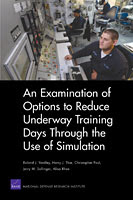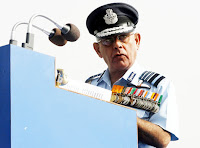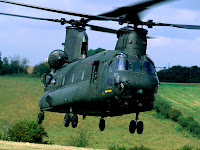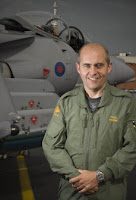
SI International Acquisition
Date : 26 August 2008
Creates a strong foundation for growth and delivery of higher value services into the US government services market
Highlights:Serco has entered into a definitive agreement to acquire SI International, a NASDAQ listed provider of information services, outsourcing, technology and network solutions to the US Department of Defense and civil government agencies, for US$32 per share in cash, valuing its fully diluted share capital at approximately US$423m.
The acquisition will enhance Serco’s ability to deliver integrated solutions to the US$290bn US government services market, with:
Scale to bid for substantial supplier roles on large US government contracts. SI International and Serco North America will have combined revenues of US$1.3bn
Depth of capabilities to enhance Serco North America’s existing offerings
Access to higher growth areas, particularly larger Indefinite Delivery Indefinite Quantity (IDIQ) models increasingly used in the North American market
New customer relationships, with SI International and Serco North America having highly complementary customer bases
The consideration represents a premium of 40% to SI International’s closing share price on 26 August 2008.
The consideration values SI International, including the assumption of its net debt, which at 28 June 2008 was US$87.3m, at approximately US$510m, representing a multiple of approximately 12.3 times 2008 adjusted analyst forecast EBITDA.
The proposed acquisition, which will be financed exclusively from new fully committed multi currency bank facilities, is expected to be accretive to Serco’s Adjusted earnings in its first full year of ownership, and its returns are expected to meet Serco’s cost of capital in the third full year of ownership.
The acquisition, which is unanimously approved by the Board of SI International, is subject to SI International shareholder approval, regulatory clearances and customary closing conditions, and is expected to complete before the end of 2008.
Serco Group Chief Executive Christopher Hyman said: “The acquisition of SI International will significantly expand the scale and potential of Serco’s North American operations. The management and employees of both our organisations have a strong track record and shared commitment to delivering critical services to the US government.
“Our capabilities are highly complementary and together we will create a stronger organisation that will have customers across all US Armed Forces, the US Intelligence services and a number of Federal government agencies. Our enhanced presence as a top 30 supplier in the substantial US Federal services market will provide a stronger platform for future growth. Furthermore, we will be able to offer customers access to more integrated solutions from a company with global reach and proven expertise in transforming government services. ”
SI International President and Chief Executive Officer Brad Antle, said: “We are pleased that we can join a company of Serco’s stature and success. We have had a tremendous track record during our ten-year history and are very proud of the leading position we have achieved in the government services sector. Now is the right time to go to the next level so the services we provide to our customers are enhanced by the scale and global reach that Serco can offer.”
Transaction OverviewSerco Group plc (Serco) today announces that it has signed a definitive merger agreement to acquire SI International, a NASDAQ listed provider of information services, outsourcing, technology and network solutions to both US defense and civil government agencies.
Under the agreement, which is unanimously approved by the board of SI International, shareholders in SI International will receive US$32 per share in cash, valuing SI International’s fully diluted share capital at approximately US$423m, and representing a premium of 40% to SI International’s closing share price on 26 August 2008.
The consideration values SI International, including the assumption of its net debt, which at 28 June 2008 was US$87.3m, at approximately US$510m, representing a multiple of approximately 12.3 times 2008 analyst forecast EBITDA.
Strategic RationaleSI International will be integrated with Serco’s existing North American business, and the combination will strengthen the North American division’s presence in the US federal government services market, with a broad portfolio of clients, contracts and capabilities. This will provide a strong foundation for growth and delivery of higher value services into this substantial market.
The acquisition of SI International will:Increase Serco North America’s scale: With revenue of approximately US$1.3bn and approximately 11,500 employees, the combined businesses will rank alongside US government contractors with revenue of more than US$1bn who are able to compete for more significant roles in larger government contracts
Enhance the depth of our capabilities in North America: SI International will add to the depth of Serco North America’s capabilities, notably in Information and Communications Technology (ICT) and Professional, Administrative and Management Support (PAMS)
Of SI International’s 4,500 employees, approximately 80% hold security clearances or national agency checks and 13% have a top secret clearance or above. SI International employs more than 500 professionals in its Applications Development practice area, and has more than 100 employees who are certified as Project Management Professionals. These skills are highly complementary to Serco’s existing strong capabilities in human capital management, engineering, cost analysis and transportation management.
Provide access to higher growth areas: The US government services market is predicted to grow at approximately 5% - 8% per annum into the medium term. Indefinite Delivery Vehicles (IDVs), which are large scale contract vehicles through which customers issue many smaller task orders at short notice to a pre-qualified group of contractors, are increasingly the preferred contracting method in this market, and SI International’s track record in successfully bidding on large IDVs will enhance Serco North America’s ability to grow.
Broaden and deepen our quality customer relationships in North America: SI International’s customer base is highly complementary to Serco North America’s, which is primarily focused on the US Army and Navy. SI International will add strong customer relationships with the US Air Force, US intelligence and security agencies, and certain agencies within the Federal civil government.
Background on SI InternationalSI International is a leading US Federal Government services contractor providing business process outsourcing and technology services. The company combines highly skilled, highly security cleared people with sophisticated technology to deliver policy outcomes.
SI International was founded in 1998, and floated on NASDAQ in 2002. Headquartered in Reston, VA, the company employs around 4,500 people.
In the year to 29 December 2007, SI International’s Adjusted operating profit was US$42.7m and Adjusted profit before tax was US$35.8m on revenue of US$510.8m. 53% of revenues were from federal civilian agencies and 46% from the Department of Defense, with the remainder from commercial entities. 79% of revenues were from prime contracts.
In the first half to 28 June 2008, SI International’s Adjusted operating profit was US$17.7m and Adjusted profit before tax was US$14.4m on revenue of US$277.2m. At 28 June 2008, SI International had gross assets of US$455.0m. Net debt at 28 June 2008 was US$87.3m.
The consensus of analyst’s forecasts for SI International for the financial year to December 2008 is for adjusted EBITDA of US$41.6m and Adjusted operating profit of US$37.3m on revenue of US$573.5m (see “Financial Information”).
Management of the combined businessOn closing, the enlarged Serco North America business will be led by its current Chairman and CEO, Ed Casey, who joined Serco in 2005. He will lead a management team consisting of senior members of both SI International and Serco.
Financial effect of the acquisition on SercoThe integration of SI International and Serco North America is expected to generate opportunities for cost efficiencies from the combination of head offices, finance and information technology. Annualised cost savings in excess of US$10m, a substantial proportion of which are associated with SI International no longer being a public company, are expected to be realised by the end of the second full year of ownership.
The acquisition is expected to be accretive to Serco’s Adjusted earnings in its first full year of ownership, and its returns are expected to meet Serco’s cost of capital in the third full year of ownership.
FundingThe acquisition of SI International will be funded from £700m of new fully committed multi-currency bank debt facilities, which will also refinance Serco’s existing bank debt. The new facilities have a term of five years. The financing for SI International will be drawn in US dollars, giving an expected funding cost of around 5.5%.
Shareholder approval and regulatory clearances
The acquisition is subject to SI International shareholder approval as well as the regulatory approvals, including Hart-Scott-Rodino and Exon-Florio, and customary closing conditions.
The acquisition is expected to complete before the end of 2008.
Technorati Tags:
Acquisition, Serco Group PLC












































